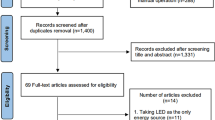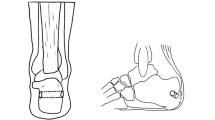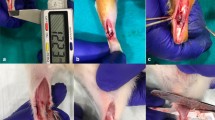Abstract
Much current research is focused on biologic enhancement of the tendon repair process. To evaluate the different methods, which include a variety of gene therapy and tissue engineering techniques, histological and biomechanical testing is often employed. Both modalities offer information on the progress and quality of repair; however, they have been historically considered as two separate entities. Histological evaluation is a less costly undertaking; however, there is no validated scoring scale to compare the results of different studies or even the results within a given study. Biomechanical testing can provide validated outcome measures; however, it is associated with increased cost and is more labor intensive. We hypothesized that a properly developed, objective histological scoring system would provide a validated outcome measure to compare histological results and correlate with biomechanics. In an Achilles tendon model, we have developed a histological scoring scale to assess tendon repair. The system grades collagen orientation, angiogenesis, and cartilage induction. In this study, histology scores were plotted against biomechanical testing results of healing tendons which indicated that a strong linear correlation exists between the histological properties of repaired tendons and their biomechanical characteristics. Concordantly, this study provides a pragmatic and financially feasible means of evaluating repair while accounting for both the histology and biomechanical properties observed in surgically repaired, healing tendon.







Similar content being viewed by others
References
Ahmad CS, Wing D, Gardner TR, Levine WN, Bigliani LU. Biomechanical evaluation of subscapularis repair used during shoulder arthroplasty. J Shoulder Elbow Surg. 2007 May-Jun;16(3 Suppl):S59-64.
Archambault JM, Jelinsky SA, Lake SP, Hill AA, Glaser DL, Soslowsky LJ. Rat Supraspinatus Tendon Expresses Cartilage Markers with Overuse. J Orthop Res. 2007 May;25(5):617-624.
Baskies MA, Tuckman D, Paksima N, Posner MA. A new technique for reconstruction of the ulnar collateral ligament of the thumb. Am J Sports Med. 2007 Aug; 35(8):1321-5.
Bi X, Li G, Doty SB, Camacho NP. A novel method for determination of collagen orientation in cartilage by Fourier transform infrared imaging spectroscopy (FT-IRIS). Osteoarthritis Cartilage 2005 Dec;13(12):1050-8.
Chhabra A, Tsou D, Clark RT, Gaschen V, Hunziker EB, Mikic B. Gdf-5 deficiency in mice delays Achilles tendon healing. J Orthop Res. 2003 Sep;21(5):826-35.
Dines JS, Grande DA, Dines DM. Tissue engineering and rotator cuff tendon healing. J Shoulder Elbow Surg. 2007; 16(5 Suppl):S204-7.
Dines JS, Grande DA, ElAttrache N, Dines DM. Biologics in Shoulder Surgery: Suture Augmentation and Coating to Enhance Tendon Repair. Techniques in Orthop. 2007;22(1):20-5.
Dines JS, Weber L, Razzano P, Prajapati R, Timmer, M, Bowman S, Bonasser L, Dines DM, Grande DA. The effect of growth differentiation factor-5-coated sutures on tendon repair in a rat model. J Shoulder Elbow Surg. 2007;16(5 Suppl):S215-21 (May 14).
Domb BG, Ehteshami JR, Shindle MK, Gulotta L, Zoghi-Moghadam M, MacGillivray JD, Altchek DW. Biomechanical comparison of 3 suture anchor configurations for repair of type II SLAP lesions. Arthroscopy. 2007 Feb;23(2):135-40.
Fowble VA, Vigorita VJ, Bryk E, Sands AK. Neovascularity in chronic posterior tibial tendon insufficiency. Clin Orthop Relat Res. 2006 Sep;450:225-30.
Galatz LM, Sandell LJ, Rothermich SY, Das R, Mastny A, Havlioglu N, Silva MJ, Thomopoulos S. Characteristics of the rat supraspinatus tendon during tendon-to-bone healing after acute injury. J Orthop Res. 2006 Mar;24(3):541-50.
Kajikawa Y, Morihara T, Watanabe N, Sakamoto H, Matsuda K, Kobayashi M, Oshima Y, Yoshida A, Kawata M, Kubo T. GFP chimeric models exhibited a biphasic pattern of mesenchymal cell invasion in tendon healing. J Cell Physiol 2007 Mar;210(3):684-91.
Kleeman RU, Krocker D, Cedraro A, Tuischer J, Duda GN. Altered cartilage mechanics and histology in knee osteoarthritis: relation to clinical assessment (ICRS Grade). Osteoarthritis Cartilage. 2005 Nov;13(11):958-63
Moojen DJ, Saris DB, Auw Yang KG, Dhert WJ, Verbout AJ. The correlation and reproducibility of histological scoring systems in cartilage repair. Tissue Eng. 2002 Aug;8(4):627-34.
Pineda S, Pollack A, Stevenson S, Goldberg V, Caplan A. A semiquantitative scale for histologic grading of articular cartilage repair. Acta Anat (Basel). 1992;143(4):335-40.
Rickert M, Wang H, Wieloch P, Lorenz H, Steck E, Sabo D, Richter W. Adenovirus-mediated gene transfer of growth and differentiation factor-5 into tenocytes and the healing rat Achilles tendon. Connect Tissue Res. 2005;46(4-5):175-83.
Rodeo S, Potter HG, Turner S, Campbel D, Kim HJ, Atkinson B. Augmentation of rotator cuff tendon healing using an osteoinductive growth factor. Presented at Orthopaedic Research Society Annual Meeting, Dallas, TX; 2002
Shim JW, Elder SH. Influence of cyclic hydrostatic pressure on fibrocartilaginous metaplasia of achilles tendon fibroblasts. Biomech Model Mechanobiol. 2006 Nov;5(4):247-52.
Smith GD, Taylor J, Almqvist KF, et al. 2005. Arthroscopic assessment of cartilage repair: a validation study of 2 scoring systems. Arthroscopy 12:1462-7.
Soslowsky LJ, Carpenter JE, DeBano CM, Banjeri I, Moalli M. Development and use of an animal model for investigations of rotator cuff disease. J Shoulder Elbow Surg. 1996;5:383-92.
Thomopoulos S, Marquez JP, Weinberger B, Birman V, Genin GM. Collagen fiber orientation at the tendon to bone insertion and its influence on stress concentrations. J Biomech. 2006;39(10):1842-51.
Woo S, Hildebrand K, Watanabe N, Fenwick J, Papageorgiou C, Wang J. Tissue Engineering of Ligament and Tendon Healing. Clinical Orthopaedics and Related Research. 1999;367(S):312-23.
Author information
Authors and Affiliations
Corresponding author
Additional information
Each author certifies that he or she has no commercial associations (e.g., consultancies, stock ownership, equity interest, patent/licensing arrangements, etc.) that might pose a conflict of interest in connection with the submitted article. Of note, Johnson and Johnson Regeneratvie Therapeutics provided the rhGDF-5 for this study.
Rights and permissions
About this article
Cite this article
Rosenbaum, A.J., Wicker, J.F., Dines, J.S. et al. Histologic Stages of Healing Correlate with Restoration of Tensile Strength in a Model of Experimental Tendon Repair. HSS Jrnl 6, 164–170 (2010). https://doi.org/10.1007/s11420-009-9152-5
Received:
Accepted:
Published:
Issue Date:
DOI: https://doi.org/10.1007/s11420-009-9152-5




